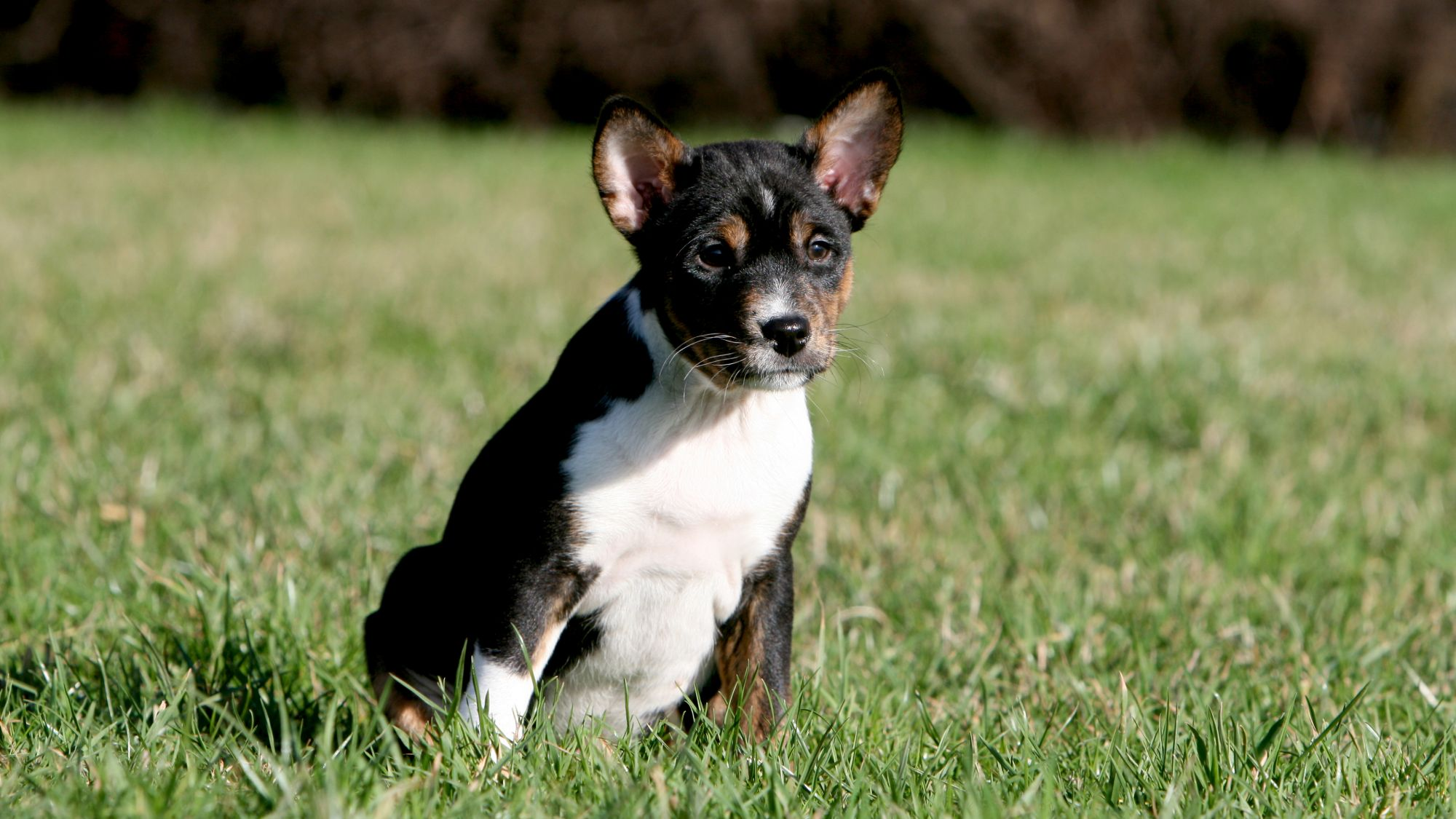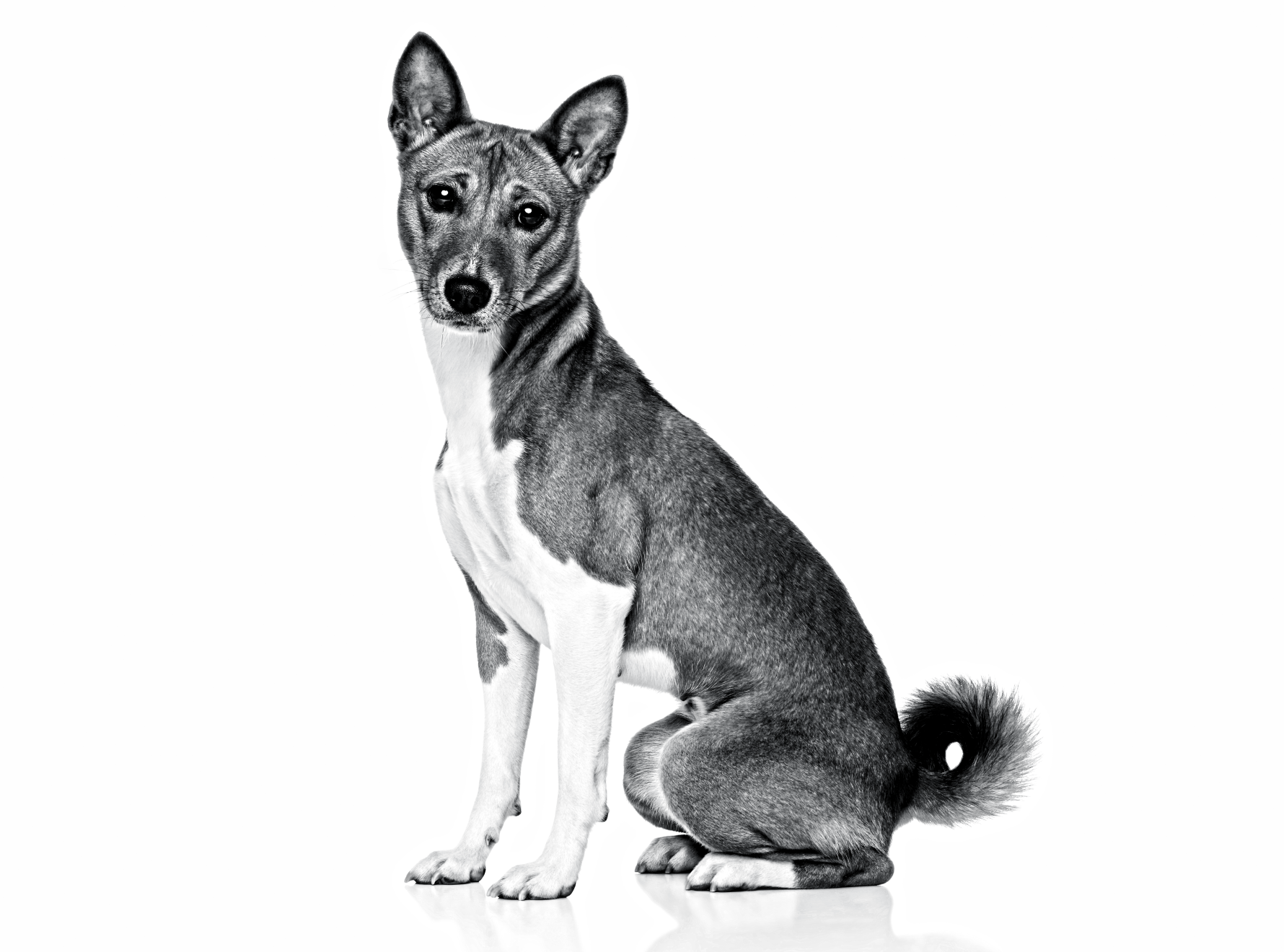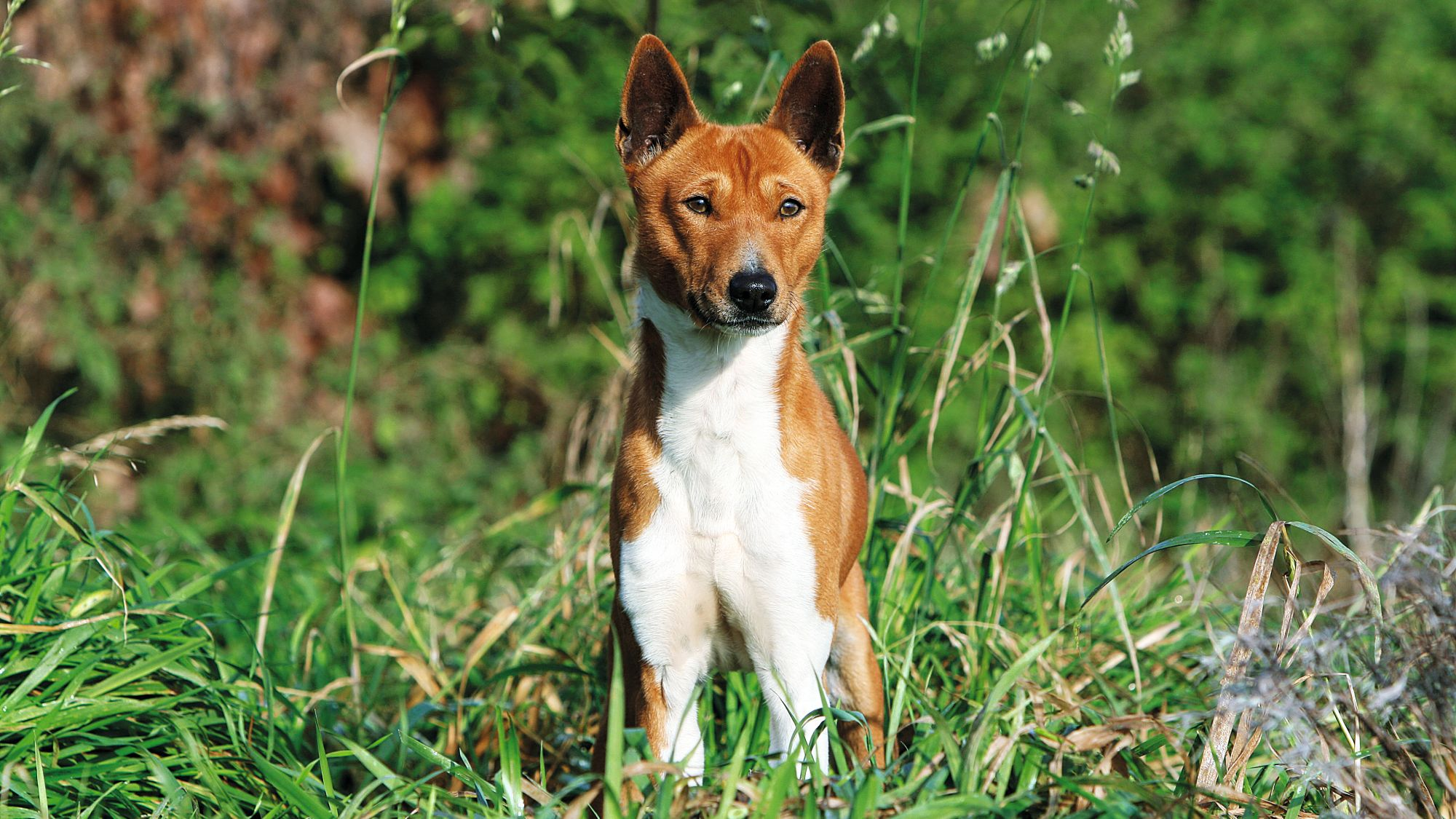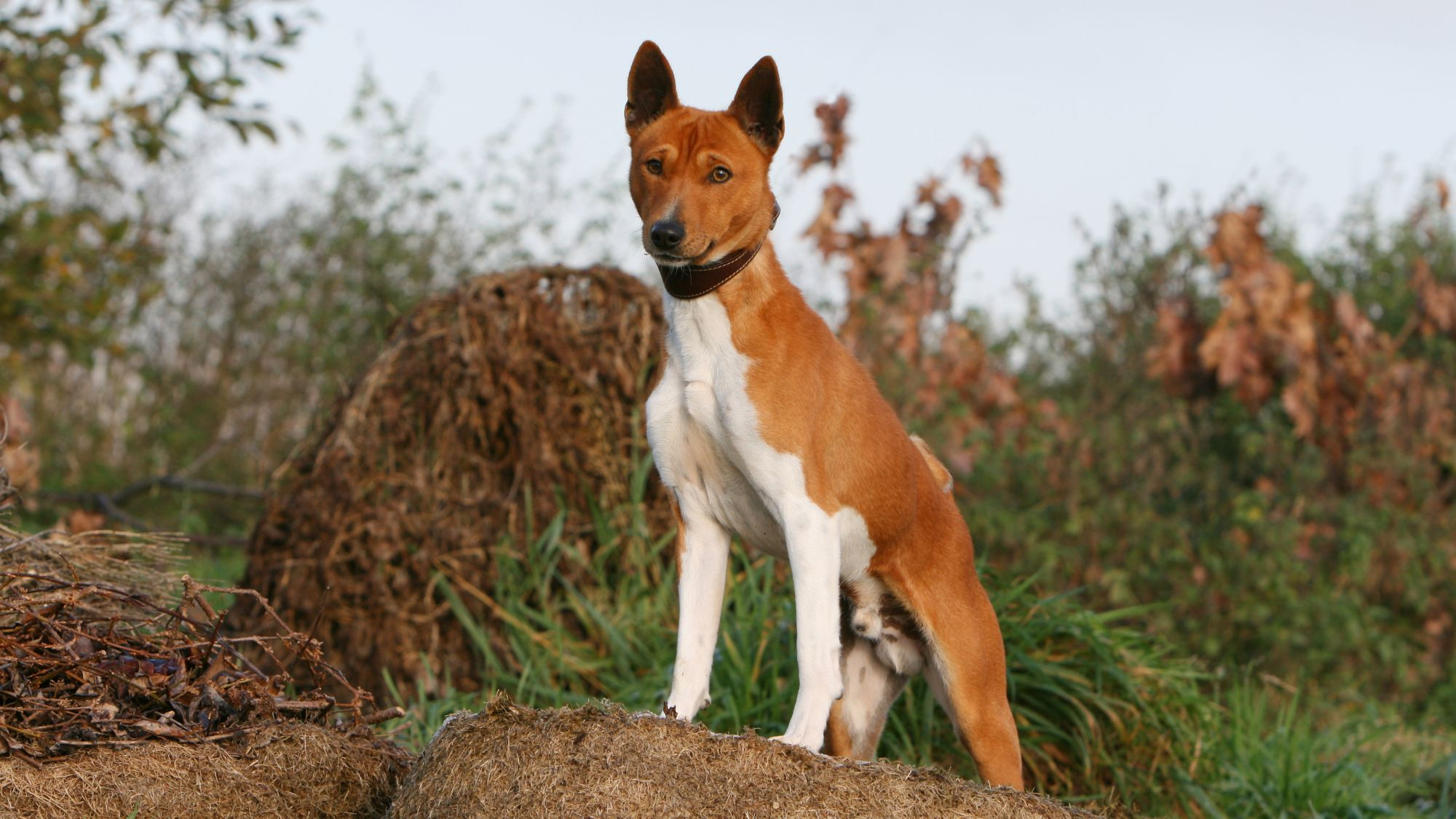Let's talk Basenjis
Thought to be one of the world’s oldest breeds, the Basenji may not be physically imposing, but what they lack in verticality, they easily make up for in intelligence and pep. One of the smallest members of the hound group, the Basenji is known for their catlike habits and disposition. Though they tend to be independently minded, with early training and socialisation, the expressive and lively Basenji can make a wonderful family pet. Did we mention they can be quite independent?
Official name: Basenji
Origins: Congo
Basenji Dog Food
Drooling tendencies
1 out of 5Shedding Level
1 out of 5Energy level*
4 out of 5Compatibility with other pets
4 out of 5Warm weather?
4 out of 5Suited to apartment living
5 out of 5Family pet?*
5 out of 5Can stay alone
4 out of 5
| Male | Female |
|---|---|
| Height | Height |
| 43 - 44 cm | 40 - 41 cm |
| Weight | Weight |
| 11 - 12 kg | 9 - 10 kg |
| Life Stage | |
|---|---|
| Adult | |
| 1 to 7 years | |
| Mature | Senior |
| 7 to 10 years | From 10 years |
| Baby | Junior |
| Birth to 2 months | 2 months to 1 year |

Get to know the Basenji
All you need to know about the breed
Once a favourite of pharaohs and long prized by African tribes for their hunting skills, Basenjis are small, sleek, fine-boned sighthounds also known as a ‘pariah dogs’, or dogs that hail from a line of non-domesticated medium-sized dogs that live near humans and are used mostly as watchdogs. Basenjis are renowned for their keen eyesight, acute sense of smell … and silence. In fact, the Basenji is even referred to as ‘barkless’, a trait that would no doubt come in handy while scouting prey in tall grasses. However, while Basenjis seldom bark, they do have a vocal repertoire that includes a remarkable yodel, often performed when they’re content. Move over, Switzerland.
But this unique vocal ability isn’t the Basenji’s only impressive trait. They also have a penchant for licking their short, burnished coats squeaky clean—a predilection for personal grooming that has earned them a frequent comparison to cats. And the resemblance doesn’t stop there. While Basenjis are affectionate with, and often quite protective of, their human families, they can be guarded, if not aloof towards strangers. Additionally, the Basenji can be stubborn. Understanding what is being asked of them comes fairly easily to a Basenji—but actually doing it depends on whether or not they see the point.
Bright, inquisitive, and bounding with energy, Basenjis do best when these qualities are channelled through frequent exercise and stimulating activities like canine sports and obedience competitions. For those keen on long play sessions in the garden and on-the-lead walks, the Basenji can make a rewarding companion.

2 facts about Basenjis
1. It’s a bird, it’s a plane, it’s a Basenji!
It’s not too much of a stretch to say that Basenjis fly—literally. Like some other speedy breeds, Basenjis use a technique called a “double suspension gallop”. While most dogs keep at least one paw on the ground at all times, Basenjis have all four in the air not once, but at two different times when running, allowing them to reach impressive speeds. Good luck catching up!
2. Call me by my name
Basenjis weren’t always Basenjis. When the first attempts were made to import and breed the dogs in England, they were known as African bush dogs or Congo Terriers. Even in their homeland, Basenjis were known by different names including one that translates to “jumping up-and-down dog”, a reference to their vertical jumping ability. It was in 1936 that a certain Ms. Olivia Burn successfully imported the breed and christened them Basenji, an African word meaning “dog of the bush”.

History of the breed
Francis Bacon stated, “Silence is the sleep that nourishes wisdom”. While the Basenji has been around far longer than Mr. Bacon, he could easily have been referring to this ancient breed. The Basenji’s likeness has been found on Ancient Egyptian artifacts as well as in Babylonian and Mesopotamian art, attesting to the breed’s longevity. Might less bark and more observation have something to do with it?
For millennia, the Basenji was prized by African tribes for their meteoric bursts of speed, sharp, long-range eyesight, silence and an evolved sense of smell—qualities that made them ideal for scouting and flushing out prey on hunting expeditions. While the rest of the world sped along, the semi-wild Basenji remained largely unaltered in isolated parts of Africa.
It wasn’t until the late 19th century that the Basenji was introduced to the West, with breeding pairs being imported to England in 1895 and again in 1937. Of these overseas Basenji breeding attempts, only one male survived and was sent to the United States to be paired with a female. Fortunately, this attempt was a success, and the Basenji line was established on American soil. While Basenjis remain rare, they continue to enjoy a loyal fan base.
From head to tail
Physical characteristics of Basenjis
1.Head
2.Eyes
3.Body
4.Coat
5.Tail

Things to look out for
From specific breed traits to a general health overview, here are some interesting facts about your Basenji
Screen the genes
While generally quite healthy, some Basenjis have been identified as carriers of Fanconi Syndrome. This genetic condition involves a multitude of abnormalities that impair the kidneys’ ability to normally process sugars and protein. The leading signs for Fanconi syndrome are frequent drinking and urination. Though Fanconi syndrome is no longer considered fatal, it does require consistent, life-long treatment that varies from one dog to the next. Fortunately, responsible Basenji breeders will screen their breeding stock to identify any potential carriers of the disease and prevent it from being passed down.
Tummy talk
Humans aren’t the only ones who can develop stomach issues. Like many dogs, Basenjis can suffer from a variety of inflammatory bowel diseases including a severe, progressive form called immunoproliferative enteropathy. The symptoms for this disease can include diarrhea, vomiting, loss of appetite and weakness. Fortunately, immunoproliferative enteropathy is fairly rare, occurring in around 3% of all Basenjis. Nevertheless, should your pooch show any symptoms, it’s best to check with your vet to find the best course of treatment, should any be necessary.
Healthy diet, healthier dog

When choosing food for a Basenji, there are many factors to consider: Their age, lifestyle, activity level, physiological condition, and health including potential sickness or sensitivities. Food provides energy to cover a dog’s vital functions, and a complete nutritional formula should contain an adjusted balance of nutrients to avoid any deficiency or excess in their diet, both of which could have adverse effects on the dog.
Clean and fresh water should be available at all times to support good urinary regularity. In hot weather and especially when out exercising, bring water along for your dog’s frequent water breaks.
Energy intake may also have to be adapted to the climatic conditions. A dog that lives outdoors in winter will have increased energy requirements.
The following recommendations are for healthy animals. If your dog has health problems, please consult your veterinarian, who will prescribe an exclusively veterinary diet.
An Basenji puppy’s requirements, in terms of energy, protein, minerals, and vitamins, are much greater than those of an adult dog. They need energy and nutrients to maintain their body, but also to grow and build it. Until they are 12 months old, a Basenji puppy’s immune system develops gradually. A complex of antioxidants – including vitamin E – can help support their natural defences during this time of big changes, discoveries, and new encounters. Their digestive functions are different from an adult Basenji’s, too: their digestive system is not mature yet so it’s important to provide highly-digestible proteins that will be effectively used. Prebiotics, such as fructo-oligosaccharides, support digestive health by helping balance the intestinal flora, resulting in good stool quality.
Similarly, a puppy’s teeth – starting with the milk teeth, or first teeth, then the permanent teeth – are an important factor that needs to be taken into account when choosing the size, shape, and texture of kibble. This short growth phase also means high energy needs, so the food must have a high energy content (expressed in Kcal/100g of food), while concentrations of all other nutrients will also be higher than normal in a specially-formulated growth food. It is recommended to split the daily allowance into three meals until they are six months old, then to switch to two meals per day.
Throughout their life, it is important to avoid feeding Basenjis human foods or fatty snacks. Instead, reward them with kibble taken from their daily meal allowance, and strictly follow the feeding guidelines written on the package in order to prevent excessive weight gain.

The main nutritional goals for adult Basenjis are:
Maintaining an ideal body weight by using highly-digestible ingredients and keeping the fat content at a sensible level.
Promoting optimal digestibility with high-quality protein and a balanced supply of dietary fibre.
Helping to preserve the health and beauty of the skin and coat with the enriched addition of essential fatty acids (especially EPA and DHA), essential amino acids, and B vitamins.
To help support their natural defences, a formula enriched with an antioxidant complex and containing mannan-oligosaccharides is recommended.

After 7 years old, Basenjis start facing the first signs of ageing. A formula enriched with antioxidants will help maintain their vitality, and specific nutrients, such as chondroitin and glucosamine, will help maintain healthy bones and joints. Ageing is also accompanied by the modification of digestive capacities and particular nutritional requirements, so food for older Basenjis should have the following characteristics:
Higher vitamin C and E content. These nutrients have antioxidant properties, helping to protect the body’s cells against the harmful effects of the oxidative stress linked to ageing.
High-quality protein. Contrary to a widely held misconception, lowering the protein content in food brings little benefit in limiting kidney failure. In addition, older dogs are less efficient at using dietary protein than younger dogs. Reducing phosphorus content is a good way of slowing down the gradual deterioration of kidney function.
A higher proportion of the trace elements iron, zinc and manganese to help to keep the skin and coat in good condition.
A higher quantity of polyunsaturated fatty acids to help maintain the quality of the coat. Dogs can normally produce these fatty acids but ageing can affect this physiological process.
As they age, dogs increasingly suffer from teeth problems. To ensure they continue to eat in sufficient quantities, the shape, size and hardness of their kibble needs to be tailored to their jaw.

Caring for your Basenji
Grooming, training and exercise tips
7/7
All about Basenjis
Because the Basenji has a larynx shape that prevents them from really producing a bark, they make other sounds to express themselves including whimpering, growling, and of course the famous Basenji yodel. Still, while not mute, the Basenji is not a frequent vocaliser.
Basenjis can do well inside the home provided they get sufficient mental and physical stimulation. When left alone, the Basenji can quickly become bored and resort to chewing things up or searching for an escape hatch. Plenty of play and exercise will produce the best Basenji behaviour.
Suggested Breeds
Read more on this topic
Sources
- Veterinary Centers of America https://vcahospitals.com/;
- Royal Canin Dog Encyclopaedia. Ed 2010 and 2020
- Banfield Pet Hospital https://www.banfield.com/
- Royal Canin BHN Product Book
- American Kennel Club https://www.akc.org/
Like & share this page